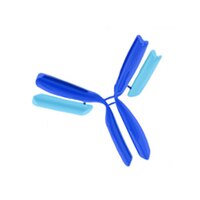GR37 Sigma-AldrichAnti-Vitamin D Receptor (Ab-1) Rat mAb (9A7γE10.4)
This Anti-Vitamin D Receptor (Ab-1) Rat mAb (9A7γE10.4) is validated for use in Frozen Sections, Gel Shift, WB, IP, Paraffin Sections for the detection of Vitamin D Receptor (Ab-1).
More>> This Anti-Vitamin D Receptor (Ab-1) Rat mAb (9A7γE10.4) is validated for use in Frozen Sections, Gel Shift, WB, IP, Paraffin Sections for the detection of Vitamin D Receptor (Ab-1). Less<<お勧めの製品
概要
| Replacement Information |
|---|
主要スペック表
| Species Reactivity | Host | Antibody Type |
|---|---|---|
| Am, Ch, Ht, H, M, Porcine, R | R | Monoclonal Antibody |
価格&在庫状況
| カタログ番号 | 在庫状況 | 包装 | Qty/Pk | 価格 | 数量 | |
|---|---|---|---|---|---|---|
| GR37-100UGCN |
|
樹脂アンプル | 100 μg |
|
— |
| Description | |
|---|---|
| Overview | Recognizes both occupied and unoccupied vitamin D receptor in breast carcinomas expressing the vitamin D receptor protein. |
| Catalogue Number | GR37 |
| Brand Family | Calbiochem® |
| Product Information | |
|---|---|
| Form | Liquid |
| Formulation | In 10 mM PBS, 0.2% BSA, pH 7.4. |
| Positive control | Breast carcinoma tissue (see comments) |
| Preservative | ≤0.1% sodium azide |
| Quality Level | MQ100 |
| Physicochemical Information |
|---|
| Dimensions |
|---|
| Materials Information |
|---|
| Toxicological Information |
|---|
| Safety Information according to GHS |
|---|
| Safety Information |
|---|
| Product Usage Statements |
|---|
| Packaging Information |
|---|
| Transport Information |
|---|
| Supplemental Information |
|---|
| Specifications |
|---|
| Global Trade Item Number | |
|---|---|
| カタログ番号 | GTIN |
| GR37-100UGCN | 04055977228311 |
Documentation
Anti-Vitamin D Receptor (Ab-1) Rat mAb (9A7γE10.4) (M)SDS
| タイトル |
|---|
Anti-Vitamin D Receptor (Ab-1) Rat mAb (9A7γE10.4) 試験成績書(CoA)
| タイトル | ロット番号 |
|---|---|
| GR37 |
参考資料
| 参考資料の概要 |
|---|
| Brown, A.J. 1999. Nephrol. Dial. Transplant. 14, 11. Fleet, J.C. 1999. Nutr. Rev. 57 60. Evans, S.R., et al. 1998. Clin. Cancer Res. 4, 1591. Friedrich, M., et al. 1998. J. Histochem. Cytochem. 46, 1335. Issa, L.L., et al. 1998. Inflamm. Res. 47, 451. Kivineva, M., et al. 1998. J. Steroid Biochem. Mol. Biol. 66, 121. Nangia, A.K., et al. 1998. J. Steroid Biochem. Mol. Biol. 66, 241. |
引用
| Title | |
|---|---|
|
|
| データシート | ||||||||||||||||||||||||||||||||||||||||||||
|---|---|---|---|---|---|---|---|---|---|---|---|---|---|---|---|---|---|---|---|---|---|---|---|---|---|---|---|---|---|---|---|---|---|---|---|---|---|---|---|---|---|---|---|---|
|
Note that this data sheet is not lot-specific and is representative of the current specifications for this product. Please consult the vial label and the certificate of analysis for information on specific lots. Also note that shipping conditions may differ from storage conditions.
|







